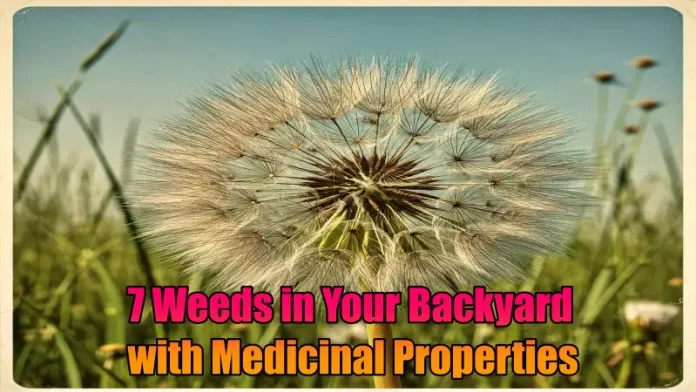More Than Just Pesky Plants: Unearthing 7 Weeds with Healing Histories
Table of Contents
You know the feeling. You spend hours cultivating your perfect garden patch, or just trying to keep the lawn looking decent, and then they appear. Weeds. Popping up where they’re not wanted, messing with your meticulous plans. Dandelions mocking you with their sunny heads, sticky plants grabbing your trousers, prickly ones making you yelp. Most of us yank ’em out, maybe curse a little, and toss them onto the compost heap without a second thought.
But what if I told you that some of those very same pesky invaders are actually plants that heal? What if your backyard, or that neglected patch down the street, was hiding a trove of traditional remedies, a sort of historical echo of a backyard healing plants pharmacy?
It sounds a bit romantic, maybe even far-fetched in our world of prescriptions and pharmacies. Yet, for centuries, long before modern medicine, folks relied on the plants growing around them – yes, even the weedy ones – for wellness and treating common ailments. These weren’t miracle cures, mind you, but part of a complex system of natural remedies weeds provided. Learning about these common weeds medicinal uses connects us to that history and maybe, just maybe, gives us a new appreciation for the resilient green things we usually overlook.
Hold Your Horses Though! A Really BIG Disclaimer First
Okay, before we dive into identifying potential leafy allies, let’s get something crystal clear. This is CRITICAL.
- IDENTIFICATION IS EVERYTHING: Many plants look alike. Some common weeds have highly toxic doppelgangers. Mistaking one for another can be dangerous, even deadly. Never, EVER consume or use a plant unless you are 1000% certain of its identification. Use multiple reliable field guides, cross-reference, and if possible, learn from an experienced local forager or botanist. When in doubt, leave it out. Seriously.
- THIS IS NOT MEDICAL ADVICE: This article explores traditional and historical uses. It is NOT a substitute for professional medical diagnosis or treatment from a qualified doctor or healthcare provider. Self-treating serious conditions can have severe consequences.
- CONSULT PROFESSIONALS: Before even thinking about using any wild plant medicinally, talk to your doctor (especially if you have existing health conditions, are pregnant or nursing, or take medications, as interactions are possible) AND consult a qualified, certified clinical herbalist. They understands dosage, preparation, contraindications, and potential side effects. Their knowledge is crucial.
- DOSAGE & PREPARATION MATTER: Traditional uses involved specific preparations and dosages. Getting these wrong can render a plant ineffective or potentially harmful.
- ALLERGIES & SENSITIVITIES: You can be allergic or sensitive to any plant, even common ones. Start with extreme caution (like a tiny skin patch test for topical use) if you do decide to explore after consulting professionals.
Okay? We clear? Safety first, always. Now, with that firmly in mind, let’s respectfully meet some common weeds and learn about their historical reputations. Consider this an introduction, not an instruction manual.
Meet Your (Potential) Weedy Allies: 7 Common Plants with History
Here are seven common weeds found in many parts of the world (though local varieties might differ!) that have interesting backgrounds in traditional wellness practices:
1. Dandelion (Taraxacum officinale)
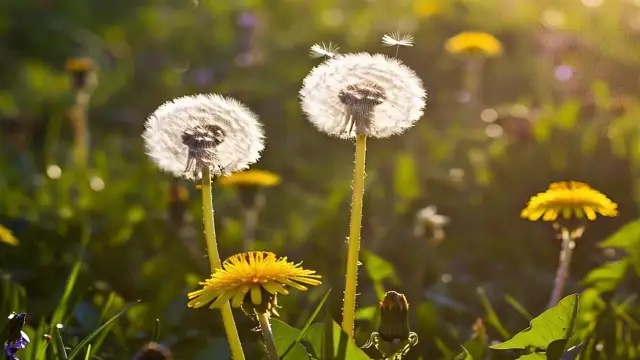
- The Look: You know this one! Deeply toothed leaves growing in a rosette flat against the ground, a hollow stem leading up to that iconic bright yellow flower, which famously turns into a fluffy white seed head (a “clock”).
- Traditional Reputation: Oh, the dandelion. Far from just a lawn nuisance, it’s perhaps one of the most well-known medicinal weeds. Traditionally, the leaves (rich in vitamins!) have been used as a bitter green to stimulate digestion and act as a mild diuretic. The root are often associated with liver support and detoxification in traditional herbalism. People used it for lots of things.
- Historical Use: Leaves eaten fresh in salads (best when young and less bitter) or cooked like spinach. Roots roasted as a coffee substitute or used in teas and tinctures. Flowers sometimes made into wine.
2. Plantain (Plantago major or Plantago lanceolata)

- The Look: Not the banana-like fruit! We mean Broadleaf Plantain (P. major) with its oval, ribbed leaves in a low rosette, or Narrowleaf Plantain (P. lanceolata) with long, slender, ribbed leaves. Both send up a distinct, somewhat boring flower stalk.
- Traditional Reputation: If dandelion is the internal supporter, plantain is often called “Nature’s Band-Aid.” Its traditional claim to fame is as a poultice. Crushed or chewed leaves were applied directly to insect bites, bee stings, minor cuts, and splinters, thought to help draw out toxins/splinters and soothe irritation. It’s one of them classic backyard healing plants.
- Historical Use: Primarily external as a poultice or infused oil/salve. Young leaves are technically edible, but often tough and stringy. Sometimes used internally as a tea for soothing internal irritations.
3. Chickweed (Stellaria media)
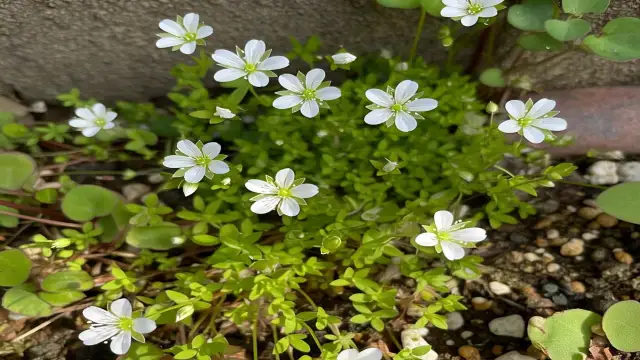
- The Look: A low-growing, sprawling, delicate-looking weed. It has small, oval, opposite leaves and tiny white flowers with petals so deeply notched they look like ten petals instead of five. A key identifier: look closely for a single line of fine hairs running down one side of the stem, switching sides at each leaf node.
- Traditional Reputation: Chickweed is known in traditional practices as a cooling and soothing herb. Often used externally for minor burns, itchy skin conditions (like eczema patches, though not a cure), and rashes. It’s also surprisingly nutritious, packed with vitamins and minerals.
- Historical Use: Applied externally as a poultice, infused in oil for salves, or used in soothing baths. Young, tender stems and leaves eaten fresh in salads or sandwiches (mild, slightly grassy flavor).
4. Purslane (Portulaca oleracea)
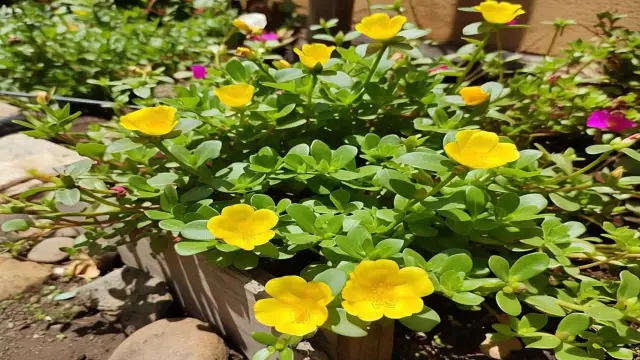
- The Look: This one loves hot weather! It’s a low-growing succulent with fleshy, paddle-shaped leaves and often reddish, smooth stems. It has tiny yellow flowers that usually only open in bright sun for a few hours. CRITICAL ID NOTE: Purslane has a dangerous look-alike called Spurge (Euphorbia species), which has a milky, irritating sap when broken and non-fleshy leaves. Purslane stems exude clear liquid. Know the difference! Spurge is toxic.
- Traditional Reputation: Purslane is a nutritional powerhouse! It’s one of the best plant sources of omega-3 fatty acids. Traditionally, it was valued for its cooling, moistening properties, used internally and externally to soothe inflammation. Considered one of the valuable plants that heal by providing great nutrition.
- Historical Use: Eaten raw in salads (crunchy, slightly lemony taste), added to soups, or lightly steamed. Less commonly used in poultices.
5. Stinging Nettle (Urtica dioica)
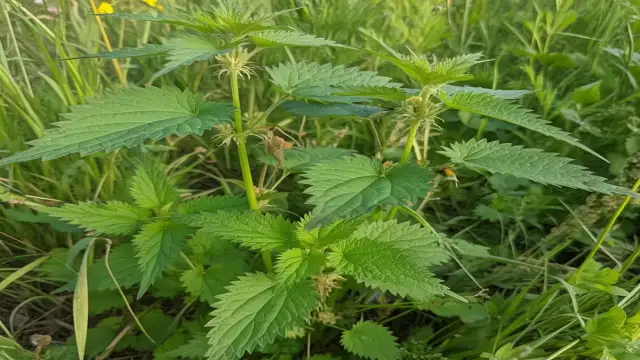
- The Look: Grows upright with serrated, opposite leaves that look a bit like mint leaves (but don’t confuse them!). The stems and leaves are covered in fine hairs (trichomes) that release irritating chemicals upon contact, causing a stinging rash. Flowers are inconspicuous, greenish, hanging clusters.
- Traditional Reputation: Yes, it stings! But nettle has a fearsome reputation offset by its incredible value after processing. Once dried or cooked, the sting is neutralized. It’s incredibly nutrient-dense (iron, calcium, vitamins). Traditionally used as a spring tonic, to support healthy inflammatory response, potentially help with seasonal allergies (hay fever), and as a general nutritive powerhouse. There was fewer sources of nutrition like this back then.
- Historical Use: NEVER EAT RAW! Cooked like spinach (delicious and nutritious), dried for tea (infusion), or made into tinctures. The sting itself was sometimes used therapeutically in urtication (controlled stinging), but do not try this at home! Gloves are essential for harvesting.
6. Cleavers (Galium aparine)
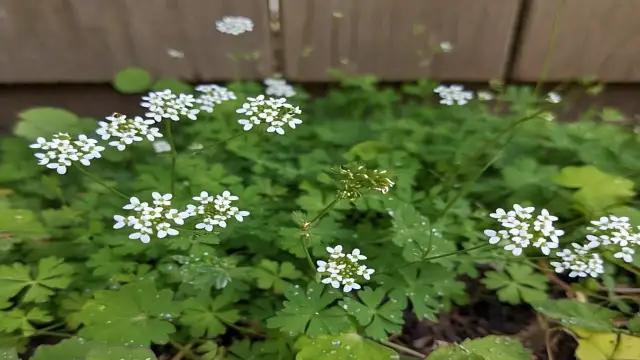
- The Look: Also known as Sticky Willy or Goosegrass. This plant scrambles over others, feeling distinctly sticky or velcro-like due to tiny hooked hairs. It has square stems and whorls of narrow leaves (usually 6-8) at intervals along the stem. Flowers are tiny and white/greenish.
- Traditional Reputation: Cleavers are strongly associated with lymphatic system support in traditional herbalism. Thought to help get things moving, acting as a mild diuretic and ‘alterative’ (helping the body’s natural cleansing processes). Considered a cooling herb.
- Historical Use: Often used fresh, either juiced (the taste is… green) or infused in cool water. Not typically heated, as heat is thought to destroy some of its properties. Used more for its internal actions than topically.
7. Yarrow (Achillea millefolium)

- The Look: Recognizable by its feathery, finely divided leaves (millefolium means “thousand leaves”). It sends up stalks topped with flat clusters (umbels) of many small flowers, typically white but sometimes pinkish. EXTREME CAUTION: Yarrow leaves can resemble those of highly poisonous plants like Poison Hemlock (Conium maculatum) or Fool’s Parsley before flowering. Hemlock has purple-splotched, smooth stems and an unpleasant smell when crushed. Proper identification by an expert is PARAMOUNT before even considering touching a plant you think might be yarrow.
- Traditional Reputation: Yarrow’s historical nickname is herba militaris because of its long use in stopping bleeding from wounds (a styptic). Traditionally used topically on minor cuts. Internally, it was used as a tea to support fever management (by promoting sweating) and sometimes for digestive upset. It’s a real potent medicinal weed.
- Historical Use: Fresh leaves crushed as a poultice for bleeding. Dried aerial parts (leaves, stems, flowers) used for teas or tinctures.
A Quick Word on Ethical Foraging Medicinal Herbs
If you do decide to learn more (with expert guidance!), remember to harvest responsibly:
- Positive ID: We’ve said it before, we’ll say it again. 100% certainty is required.
- Location Matters: Avoid harvesting from roadsides (car exhaust), industrial areas, or places that might be sprayed with pesticides or herbicides. Your own unsprayed yard is often safest, if applicable.
- Take Only What You Need: Never deplete a patch. A common guideline is to take no more than 10% of the plants in an area, ensuring the plant community remains healthy.
- Respect Wildlife: Remember that these plants are also food and habitat for insects and other critters.
The Earth Provides, But Wisdom Protects
Isn’t it fascinating? These humble plants, often dismissed and destroyed, carry centuries of history regarding human wellness and resourcefulness. They remind us that nature often holds solutions and support in unexpected places. Learning to identify medicinal plants in your own surroundings can foster a deeper connection to the natural world.
But – and it’s the biggest ‘but’ – this knowledge comes with immense responsibility. Respect the plants, respect their power, and respect the potential dangers of misidentification or misuse. Never experiment. The journey into foraging medicinal herbs should always begin with learning from qualified experts and always, always involve consultation with your doctor and a certified herbalist before any use.
So next time you see a dandelion pushing through a crack in the pavement, maybe pause for a second. Appreciate its tenacity. Recognize the history beneath its leaves. It’s more than just a weed; it’s a tiny, resilient piece of our shared natural and cultural heritage. Pretty cool, huh?

